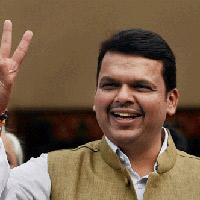 The Maharashtra government, considering the massive unrest amongst the farmers in drought-hit region of Vidarbha, Marathwada and some parts of northern Maharashtra, has taken the decision to expand the textile hub policy to nine districts across the state to override the farmers suicides in cotton growing belt.
The Maharashtra government, considering the massive unrest amongst the farmers in drought-hit region of Vidarbha, Marathwada and some parts of northern Maharashtra, has taken the decision to expand the textile hub policy to nine districts across the state to override the farmers suicides in cotton growing belt.
The districts which have been shortlisted for developing into textile hubs are Yavatmal, Buldhana, Amravati, Jalna, Parbhani, Nanded, Aurangabad, Beed and Jalgaon.
To begin with, a textile park on a sprawling 100 acre of land at Amravati will be set up. The projects will be undertaken through the public and private partnership and is aimed at creating a textile township which would have provisions for multiple activities from processing to marketing within the hub.
Chief minister Devendra Fadnavis has given instructions to expedite the projects and urged the Maharashtra State Textile Corporation and Maharashtra Industrial Development Corporation to coordinate. He has urged the authorities to streamline the details like land, power supply, water and other related aspects which are integral for the textile hubs.
“If we have to usher in economic well being for farmers in cotton belt, we have to promote industries. Significantly, we have to link the farm product with the industrial activities which would not only ensure sustainable market but also will generate new avenues of employment for the coming generations,” chief minister said.
The agro-sector cannot sustain the livelihood of 60 per cent of the population specially in areas where cotton is grown. One crop failure wrecks the lives of farmers who have no other means to generate money.
Fadnavis believes that apart from the addressing the agro-crisis in the cotton belt, textile sector lacks proper planning. What is the use of allowing a spinning mill in distant western Maharashtra where cotton transport from Vidarbha would incur massive expenditure. Instead, why not have a spinning and processing units in areas where cotton is grown. It would benefit both farmers and industrial units, he added.














